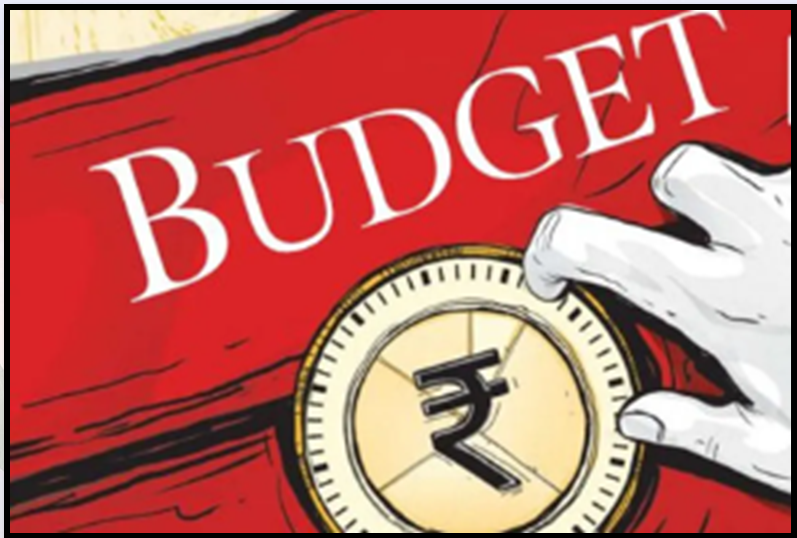“WHAT TO EXPECT FROM NDA 3.0’S BUDGET”
Syllabus:
- GS-3-Budget from new government , Interim budget , Vote on account ,Implications for people and government.
Focus:
- The article outlines the expected approach of the NDA 3.0 government in its first budget, emphasizing policy continuity, fiscal correction, and growth support through capital expenditure. Revenue mobilization strategies, social security agenda, and structural reforms are highlighted as key components. The budget aims to balance fiscal consolidation with sustained capex, leveraging higher growth and administrative improvements to enhance revenue and control expenditure.
Source - TET
Overview of the Budget’s Aim
Growth and Fiscal Correction:
- The article focuses on the anticipated first budget of the NDA 3.0 government, highlighting its potential strategies for fiscal correction, revenue mobilization, social security agenda, and structural reforms.
- It emphasizes the importance of policy continuity and the budget’s role in supporting growth through capex and crowding-in private investment
- The budget is expected to capitalize on higher-than-expected growth in the previous year.
- An unexpected increase in central bank profits is anticipated, which could aid in faster fiscal correction.
- The budget aims to support growth by lowering interest rates.
Medium-Term Budgetary Roadmap:
- Adherence to the medium-term budgetary roadmap is crucial, particularly through capital expenditure (capex).
- Capex is viewed as essential in compensating for slow consumption growth.
- There is evidence of private investment being crowded in, although capacity expansion is restrained by weak rural consumption.
Fiscal Consolidation:
- The budget is likely to pursue a balanced approach with a somewhat quicker fiscal consolidation.
- Delayed tapering of capex is a probable scenario to maintain growth momentum.
| Comparative Analysis of Interim Budget , Vote on Account , General Budget
1. Scope: o Interim Budget: Temporary financial statement for the entire fiscal year, but without major policy changes. o Vote on Account: Authorization for government expenditure for a short period, typically up to four months. o General Budget: Comprehensive annual financial statement with detailed revenue and expenditure plans, policy measures, and new schemes. 2. Duration: o Interim Budget: Effective for a few months until the new government presents its budget. o Vote on Account: Covers a short period, usually up to four months. o General Budget: Covers the entire fiscal year. 3. Policy Changes: o Interim Budget: Avoids major policy changes. o Vote on Account: No policy changes; purely for expenditure authorization. o General Budget: Includes significant policy measures and new initiatives. |
Revenue Mobilization Strategies
Higher Growth Contribution:
- Revenue mobilization is expected to be bolstered by higher growth.
- The budget may adopt a conservative approach to revenue projections, leveraging administrative improvements.
Tax Revenue Enhancements:
- Direct and indirect taxes are projected to have increased buoyancy.
- While there is limited scope for adjusting direct tax rates, the Goods and Services Tax (GST) offers more flexibility for adjustments.
Asset Sales and Dividends:
- Asset sales may not be prioritized if the public sector provides higher dividends due to increased government capex.
- Revenue from telecom spectrum sales could also provide additional comfort.
Control Over Revenue Expenditure:
-
- The budget should aim to enhance control over revenue expenditure.
- Plugging leaks in welfare delivery can translate into improved social security coverage.
Social Security and Economic Momentum
Social Security Agenda:
- The budget could signal the government’s medium-term social security agenda.
- This agenda will have significant implications for economic momentum.
Production-Linked Incentives (PLI):
- PLIs for manufacturing exports are showing positive results in select sectors.
- The budget presents an opportunity to review and adjust import duty structures to enhance impact.
Structural Reforms:
-
- The budget is expected to be a major signal for policy continuity.
- Structural changes in the economy can be anticipated through ongoing reforms.
Capital Expenditure and Investment
Role of Capex:
- Capex is critical as a ballast against slow consumption growth.
- Continued focus on capex is expected to drive economic stability and growth.
Crowding-In Private Investment:
- There is evidence of private investment being crowded in by public capex.
- However, widespread capacity expansion is hindered by weak rural consumption.
Middle Path Strategy:
- The most probable scenario includes a balance between fiscal consolidation and maintaining capex.
- A middle path approach could involve quicker fiscal consolidation alongside delayed capex tapering.
Implications for Interest Rates and Growth
Lowering Interest Rates:
- The budget aims to support economic growth by facilitating lower interest rates.
- Faster fiscal correction can contribute to creating a favorable environment for lower rates.
Economic Support Through Capex:
-
- Sustained capex will continue to play a vital role in supporting economic growth.
- The budget’s focus on capex is intended to mitigate slow consumption and stimulate investment.
Revenue Projections and Growth:
- Conservative revenue projections can provide a realistic foundation for the budget.
- Higher growth will enhance revenue mobilization, supporting fiscal strategies.
Source:The Economic Times
Associated Article :
https://universalinstitutions.com/rethink-the-emerging-dynamics-of-indias-fiscal-federalism/
Mains Practice Question :
GS-3
“Discuss the key strategies anticipated in the first budget of the NDA 3.0 government, focusing on fiscal correction, revenue mobilization, social security, and structural reforms. How do these strategies aim to balance growth and fiscal consolidation? Analyze the potential impact of these strategies on India’s economic trajectory?”(250 words)




